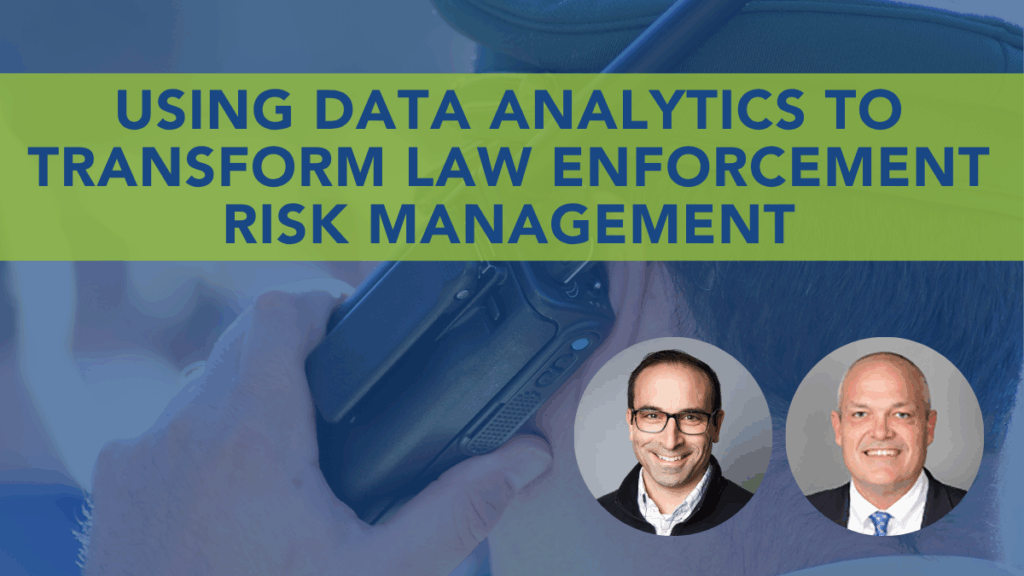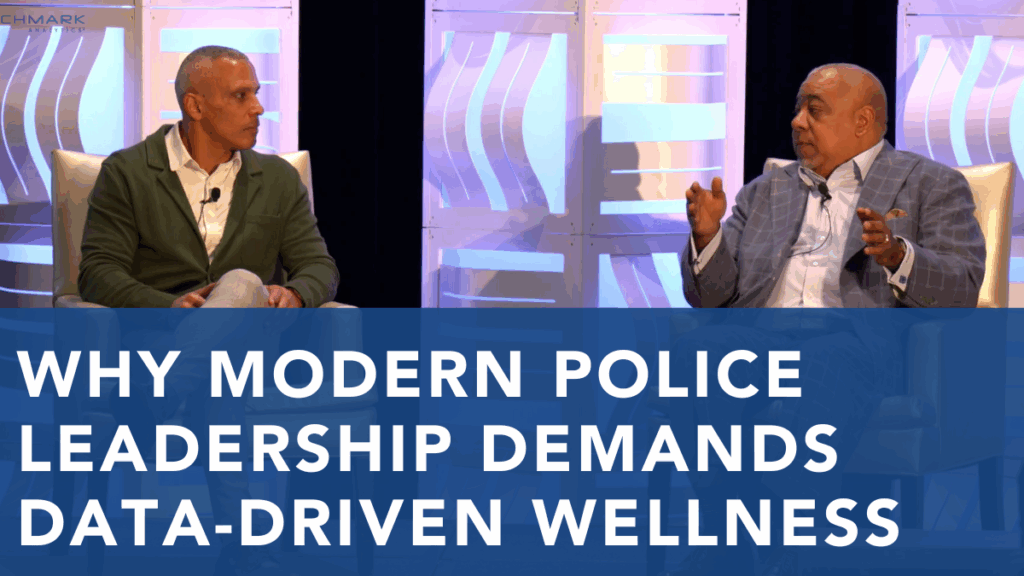5 Ways Law Enforcement Can Use People Data
Posted
February 28, 2019
Share:
You already know your department produces a lot of data. As we shared in a previous post, researchers from the University of Chicago identified seven areas of data that provide law enforcement leaders with actionable insight:
- Training and Certifications
- An Officer’s On-Duty Activity
- Use-of-Force Incidents
- Internal Affairs Review and Case Management
- Community Engagement
- Performance Evaluations
- Officer Profile – a LEO’s historic and holistic record
Even if you’re still evaluating systems to manage and track all of this data creation, it’s never too early to start thinking about how this data can help you elevate your agency’s performance.
Strategic Applications of Your People Data
1. Cultivate Future Leaders
 Tomorrow’s police executives patrol today’s streets. These future leaders look to you and your executive team to define what it means to be a police officer, and they will carry that interpretation with them into future management roles. This is why it’s critical to identify these natural leaders sooner rather than later. People data won’t explicitly pinpoint the officers in your agency who have the makings of a future chief, but a combination of intuition and data-backed insight can guide your focus to high-performing officers with the traits and track records that should be recognized and cultivated.
Tomorrow’s police executives patrol today’s streets. These future leaders look to you and your executive team to define what it means to be a police officer, and they will carry that interpretation with them into future management roles. This is why it’s critical to identify these natural leaders sooner rather than later. People data won’t explicitly pinpoint the officers in your agency who have the makings of a future chief, but a combination of intuition and data-backed insight can guide your focus to high-performing officers with the traits and track records that should be recognized and cultivated.
2. Identify Causes of Low Morale
Gauging employee morale is a common use-case for people data. There are certain morale indicators that are profession-agnostic, meaning it doesn’t matter if you’re an accountant or a police officer, chronic underperformance with a history of satisfactory or exemplary work needs to be examined for underlying issues. Low morale is particularly counter-productive when it affects officers who don’t feel supported by management and city officials. By surfacing trends in performance and attendance, people data can help you identify root causes and pre-empt a trend before it becomes a wide-spread issue.
3. Measure the Impact of Your Training Investments
Whether it’s the result of a mandate or simply best practice, continuous training is essential to the careers of your officers. An officer who isn’t properly trained isn’t set up to succeed in any department. This is what makes training a two-fold objective: not only do you have to make sure it’s delivered in an effective way, but you also have to track whether it’s been integrated into an officer’s routine.
People data can show you where training is adopted and where it’s failing to take root.
4. Pinpoint Barriers to Your Cultural Expectations
As the public and media increase the scrutiny leveled at police departments, how you evaluate and manage your agency’s culture is more important than ever. Though the “bad apple” theory has long been debunked as insufficient, there’s still weight behind organizational culture.
 Whether we notice it or not, our peers shape the way we perceive the world, and in a police department that can be problematic if that world-view doesn’t align with yours or the public’s expectations for your officers. Using people data, you can evaluate what types of behaviors perpetuate across your agency and determine whether those are in line with values you champion as an agency. If they don’t, the data should give you a head start on correcting these issues before the inertia makes it difficult to intervene.
Whether we notice it or not, our peers shape the way we perceive the world, and in a police department that can be problematic if that world-view doesn’t align with yours or the public’s expectations for your officers. Using people data, you can evaluate what types of behaviors perpetuate across your agency and determine whether those are in line with values you champion as an agency. If they don’t, the data should give you a head start on correcting these issues before the inertia makes it difficult to intervene.
5. Know When (and How) to Intervene with Off-track Officers
Much like historical crime data can be used to guide your policing strategy, people data can be used to inform how you coach officers with a track record of problematic behavior. Increasingly, early warning systems have been recognized as an effective tool to track officer misconduct and citizen complaints. While these systems represent a step in the right direction, they often fall short at solving the problem as they depend on threshold triggers, leading to a situation where excessive false positives make it difficult to meaningfully use the data.
Focus On Insights with Your Data Analysis
The maturation of people data and its underlying technologies makes a different system possible, one that uses the past to proactively shape the future. If it wasn’t before, it should now be clear that data analysis can be a slippery slope. Which is why it’s critical to put frameworks, and technology, in place that offsets our biases and emotions.
If you’re looking for a place to start, check out Benchmark Analytics’ free self-assessment.
Related Posts
Ready to Experience the Benchmark Difference?
Benchmark Analytics and its powerful suite of solutions can help you turn your agency’s challenges into opportunities. Get in touch with our expert team today.



